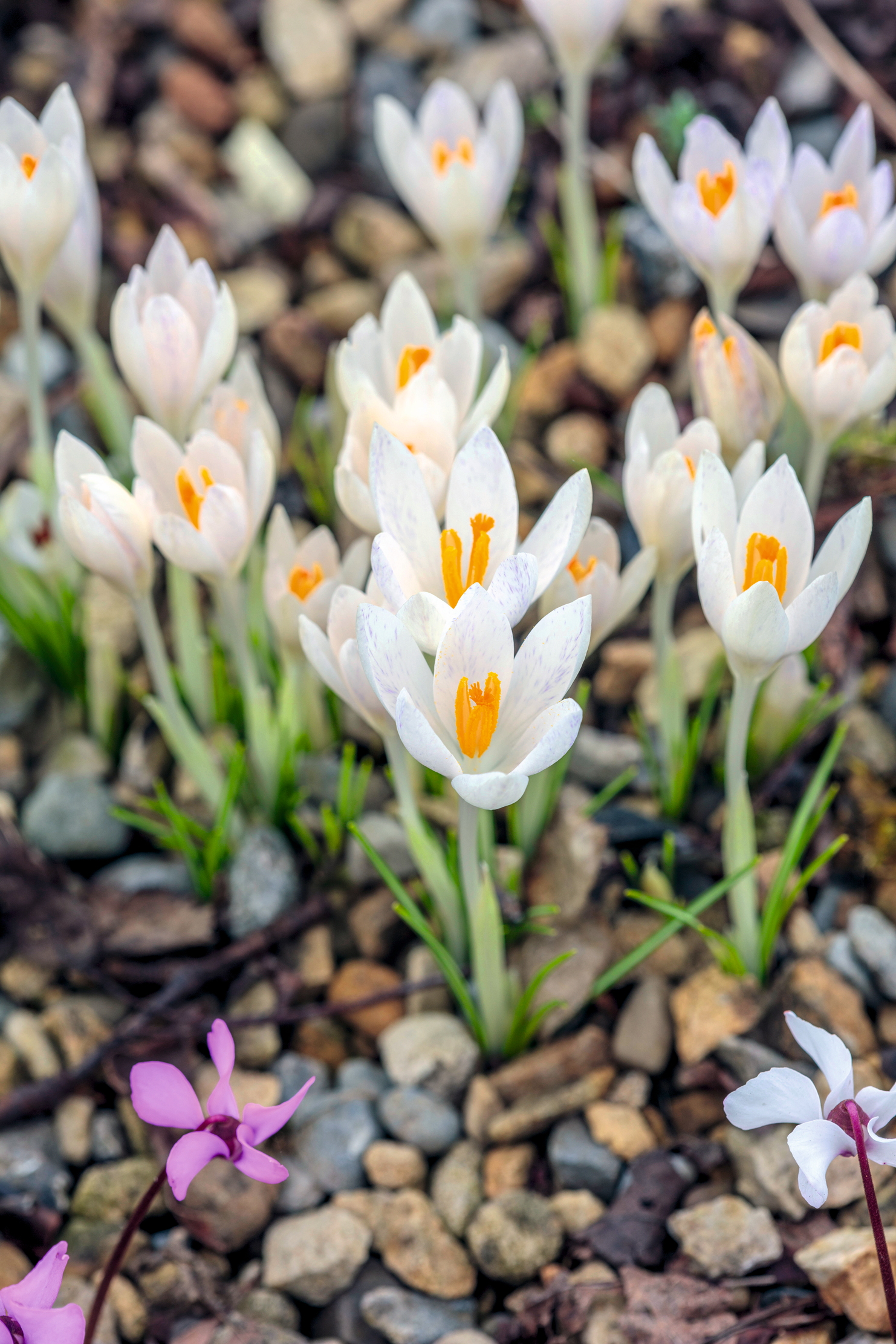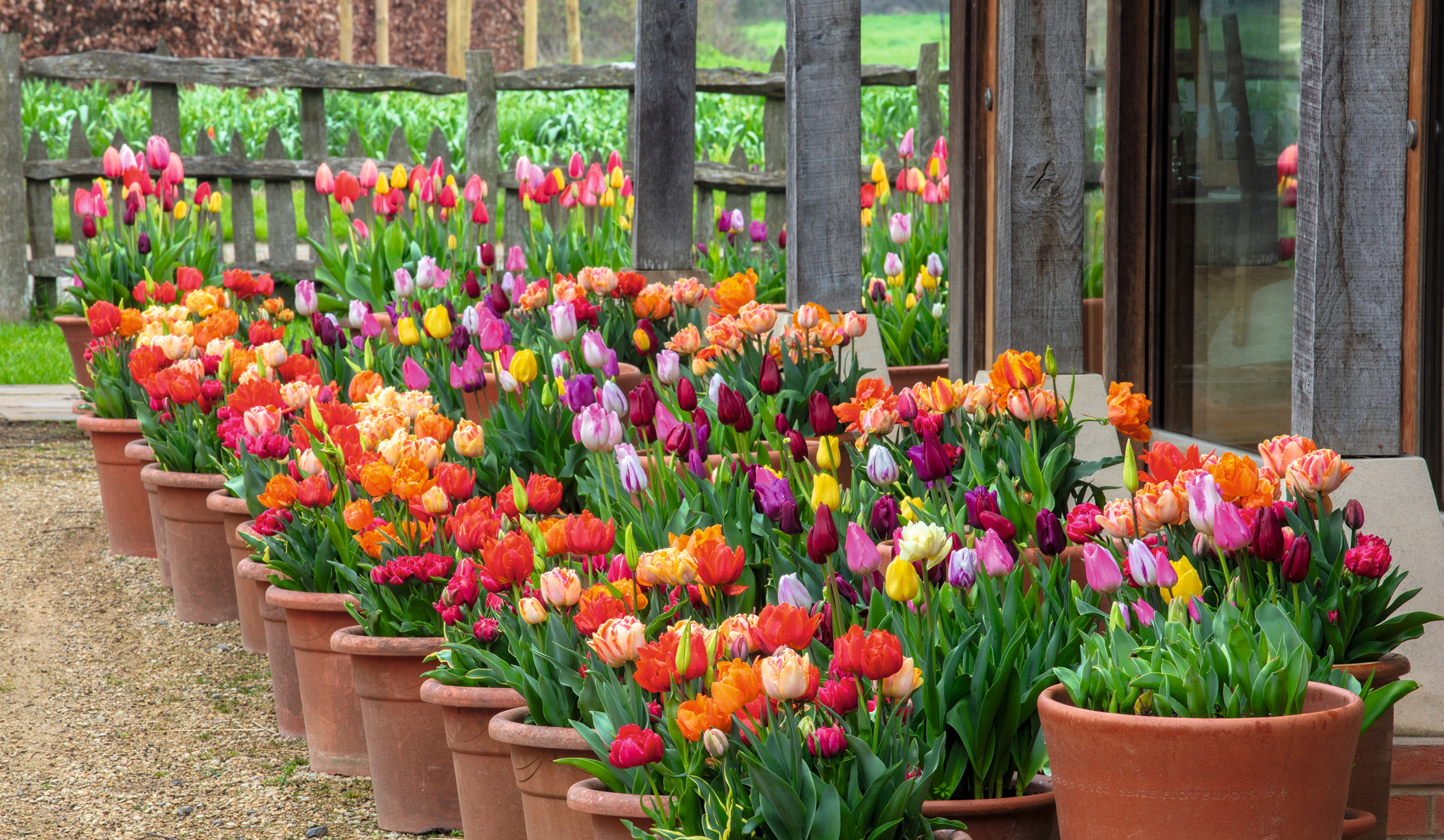When, where and what to plant for the perfect spring bulbs
The anticipation of cheerful spring bulbs can keep the gardener going through the dull winter months. John Hoyland advises on what to plant for every situation, from gravel to orchards, sun, shade or in pots.

Part of the pleasure of gardening lies in the anticipation of future delights. At this time of year, as the garden is beginning to hunker down for autumn and before the descent into the dark days of winter, gardeners can console themselves by planting spring-flowering bulbs, envisaging the colour and cheer they will bring when the bleak days are done.
The enchantment of most kinds of spring bulbs is ephemeral, sometimes lasting only a couple of weeks, but each is a waymarker that leads the garden out of the winter and towards summer. Long-awaited snowdrops are quickly joined by aconites, which give way to crocus, before waves of daffodils and hyacinths and an explosion of tulips and alliums. Each bulb bounds into flower and then falls back, withdrawing into itself to wait, it is hoped, for a repeat performance the following spring.
Bulbs are the most dependable of plants; with the minimum of effort, they will reliably flower only a few months after planting. Next spring’s potential flowers have already developed within the bulb. How well they perform depends less on what greets them as they emerge and much more on the conditions they faced last season. Newly bought bulbs will have been pampered in nurseries or given perfect growing conditions in fields, which means they are almost guaranteed to flower. Plant over the next two months, leaving tulips until November.
Getting established bulbs to re-flower is, of course, dependent on the extent to which the growing conditions are suited to the particular species. Many of the bulbs we grow in this country come from places where winters are cold and summers are hot and dry. Usually, a bulb in the wild will build up enough energy after blooming to produce a bud for the following year, but sometimes, even in the wild, this may take a couple of seasons. Don’t be disappointed if the same happens in the garden.
Apart from hybrid tulips, most bulbs, given the right situation, will thrive, even spread, either by seeding themselves about or by producing bulbils. Fortunately, not all bulbs prefer Mediterranean conditions and there is something for every part of a British garden, sunny or shady, hot or cool, well drained or claggy. By choosing carefully and planting now, every garden can benefit from the addition of spring-flowering bulbs and every gardener can be transported to next season, when light and colour and scent will return.
Plant in meadows and orchards

The re-creation of meadows and prairies, much in fashion in recent years, is difficult to achieve. The soil is far richer than a traditional meadow, resulting in vigorous and taller grasses, so choose bulbs that are at least 9in tall.
The glittering golden-yellow flowers of the Tenby daffodil, Narcissus obvallaris, will shine out above most grasses. Tough and reliable pheasant’s eye daffodils, N. poeticus var. recurvus, are more subdued, but bring with them a delicious perfume, as do close relatives N. ‘Actaea’, which has a yellow eye edged in red, and the pure-white N. ‘Polar Ice’.
Sign up for the Country Life Newsletter
Exquisite houses, the beauty of Nature, and how to get the most from your life, straight to your inbox.
It is tempting to add the snake’s head fritillary, Fritillaria meleagris, to the mix, but unless there is adequate moisture, they will not thrive. On dry soils, opt instead for F. pyrenaica, a robust species about 18in high that has lightly chequered burgundy bells with a brass-coloured interior.
Towering above all of these are the 3ft-tall stems of Camassia leichtlinii ‘Caerulea’. These, covered in starry, lavender-blue flowers, are at home in both heavy damp soils and in the thin, dry chalk of the South Downs. The cultivar ‘Lady Eve Price’ has striking deep-purple flowers, but is only available from specialist nurseries. The white form, C. leichtlinii ‘Alba’, flowers after the blue varieties have died down.
All these plants look most dramatic when planted in large swathes, but a sprinkling of single bright-red tulips dotted through the meadow will animate the planting. Both Tulipa ‘Jan Reus’, with its claret flowers, and the cherry-red T. ‘Kingsblood’ are more perennial than most tulip hybrids, but will still need replacing every three or four years.
Plant in shade

The area under deciduous trees and shrubs provides ideal conditions for the earlier flowering bulbs, which can make the most of the light that comes through before the leaf canopy closes over. Anemone blanda will form low carpets more quickly than the native wood anemone, A. sylvestris. It is often sold in collections of mixed colours, from deep-blue to pale-pink. For single colours, look for ‘White Splendour’, which has the brightest of the white flowers, and ‘Charmer’, a soft-pink cultivar.
Scilla bifolia will flower at the same time as the anemones. Growing to only 4in tall, its stems are hung with a dozen violet-blue flowers, which, although they look delicate, can shrug off wind and rain. Add to this tapestry with the cheery flowers of winter aconites, Eranthis hyemalis, with buttercup flowers, backed by a green ruff, that are often the first of the season. As its name suggests, ‘Guinea Gold’ has darker, golden flowers.
Snowflakes, Leucojum, are ideal for deeper shade and also prefer heavier and damper soil than most bulbs. The green-tipped white bells of Leucojum aestivum dangle from 2ft-tall stems, whereas its cousin, L. vernum, with similar flowers, is only 8in high. Both snowdrops and lily-of-the-valley enjoy the same conditions, yet, although now often offered in catalogues as dry bulbs, are best planted when in leaf (‘in the green’) shortly after they have flowered.
In shady places that have well-drained soil, try Scilla peruviana, a Mediterranean plant with blooms the size of a tennis ball, composed of clusters of iridescent purple-blue stars. They are often recommended for growing in full sun, but will perform well in shade.
Plant in gravel and paving

The poor, well-drained soil of gravel gardens, especially those in full sun, are the situations that most replicate the habitats of the Mediterranean areas that are home to many of the bulbs we love. Such gardens were popularised by the late Beth Chatto and, before her, alpine-plant enthusiasts often created scree gardens that mimic the same conditions, but even gaps in paving or areas at the base of south-facing walls will work as well. The key is good drainage, lots of sunshine and soil that has never been indulged with compost or manure.
Crocus are perfect plants to grow in gravel and they will even hold their own at the edge of driveways and paths. Crocus tommasinianus will vigorously seed its pale-purple flowers deep among the pebbles. Less energetic are the C. chrysanthus cultivars. One of the easiest to establish is C. ‘Cream Beauty’, with flowers the colour of clotted cream and a sweet honey scent. The more flamboyant ‘C. Orange Monarch’, the lambent flowers of which are named after the monarch butterfly, has bright-orange petals streaked in dark purple.
Dwarf alliums, such as Allium cernuum and, in particular, A. oreophilum, will also feel at home here. The latter is only 9in tall and has eye-catching heads of deep-pink flowers. Less well known, and later flowering, are the triteleias, which have delicate, airy blooms made up of dozens of star-like flowers. On Triteleia ‘Twilight’, these are deep purple. In contrast, T. ‘Starlight’ has buttery-cream flowers with a dark stripe down the centre of each petal.
Plant in pots

Few sights lift the spirits more than a terracotta pot crammed with brightly coloured tulips, the traditional plants for containers. It is the only way to grow them in gardens with clay soils.
Other bulbs can make an arresting sight, for instance, for flamboyance, a group of Fritillaria imperialis ‘Rubra’ standing proud in a large container is hard to outdo. Their dusky orange flowers dangle below a top-knot of leaves from thick stems 2ft tall. F. ‘Aurea’ has dazzling yellow flowers, whereas a new cultivar, F. ‘Early Fantasy’, is much more subdued, with flowers of soft apricot. A cousin, F. persica, stands as tall, with dusky purple bells hanging from the top foot of the stem.
The species combines well with a creamy-white cultivar, Fritillaria persica ‘Ivory Bells’. In mild parts of the country, containers can be crowded with Ixia, a South African native about 18in tall with grassy foliage and wiry stems that are packed with vibrant flowers an inch wide. Most varieties range through pink to magenta, but, on ‘Eos’, the flowers are a sumptuous peach colour.
Whatever you plant, the promises of bulbs are faithful and will reward patience.

